The Best Drapery Options for Home Theaters and Media Rooms
TLDR;
The best
drapery options for home theaters and media rooms are heavy blackout curtains, velvet or suede panels, and layered acoustic drapes. These materials block light, absorb sound, and create a professional cinematic atmosphere. Motorized or smart drapery systems also improve convenience and help maintain the perfect viewing environment.
Why Drapery Matters in a Home Theater or Media Room
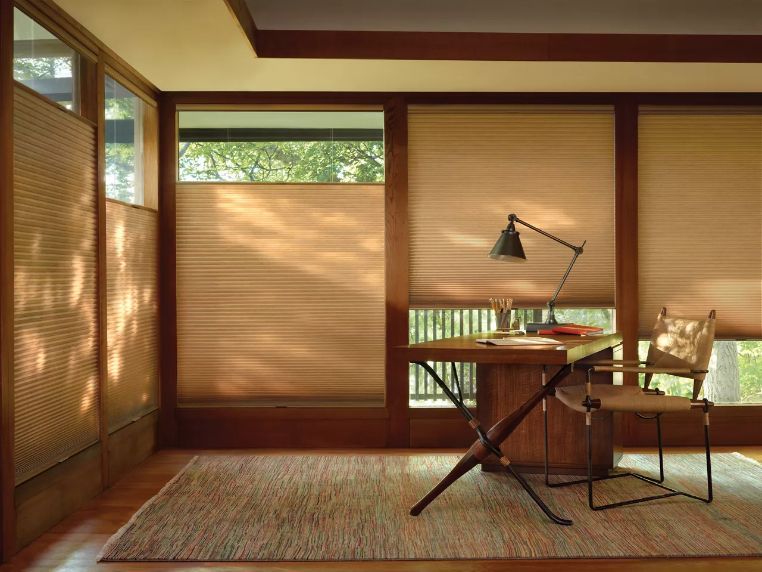
Drapery is not only a design choice. It is a functional component that defines the quality of your viewing experience. The right fabric reduces glare, absorbs sound, and prevents unwanted light from disrupting projection.
Key reasons drapery is essential:
- Light Control: Prevents sunlight and streetlights from washing out the screen.
- Sound Absorption: Reduces echo and enhances audio clarity.
- Aesthetic Appeal: Adds texture and warmth to the space, creating a cinematic feel.
Simply Windows emphasizes balance. Proper drapery creates a dark, quiet, and immersive environment, whether for a dedicated theater or a multipurpose media room.
Key Considerations Before Choosing Drapery
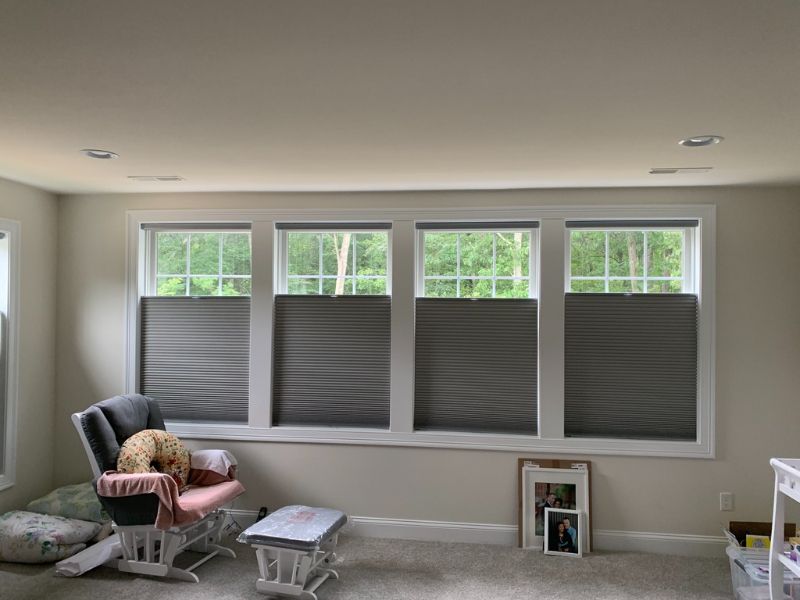
Room Type and Usage
If your space is a dedicated home theater, focus on total blackout and full acoustic control.
For a multipurpose media room, flexibility matters. Layering drapery with blinds or shades helps you shift from bright daytime use to a dark viewing mode.
Ask yourself:
- How often is the room used for watching movies?
- Does it double as a family or entertainment room?
- What level of darkness do you need?
Window Size, Placement, and Mounting Hardware
Window placement affects how you control light. Side windows near the screen require heavier materials and precise mounting.
Use:
- Ceiling-mounted tracks for full floor-to-ceiling coverage.
- Side channels to block leaks on the edges.
- Full-stack width panels for a clean closure.
The goal is to eliminate all light gaps and achieve a professional, theater-grade seal.
Fabric and Material Characteristics
The right fabric changes everything. Fabrics have different levels of opacity, sound absorption, and texture.
Popular materials include:
- Velvet: Dense, luxurious, and excellent for blocking both light and sound.
- Suede: Soft texture with strong acoustic benefits.
- Heavy Linen: Offers a natural look while helping reduce echo.
- Blackout Liner: A secondary layer that improves light control.
Each fabric type also affects aesthetics. Velvet gives a grand theater feel, while linen adds a more casual and versatile touch.
Light Control vs Aesthetic Style
Choosing between room-darkening and full blackout depends on your priorities.
- Room-darkening drapery filters light but still allows some glow for comfort.
- Blackout drapery completely eliminates light for full immersion.
For media rooms, velvet or heavy suede fabrics minimize sound reflection and keep visuals sharp. Avoid glossy materials; they reflect screen light and reduce clarity.
Smart Integration and Automation
Motorized drapery systems are no longer a luxury; they are a convenience standard.
With remote or app-based control, you can close all drapes with one command. Integration with Alexa or Google Home adds hands-free control for the perfect viewing mood.
Motorized systems work well for:
- High or hard-to-reach windows
- Large, multi-panel drapes
- Quick transitions between daylight and dark modes
Simply Windows recommends automation for modern installations. It ensures consistency and protects fabrics by reducing manual handling.
Top Drapery Options for Media Rooms
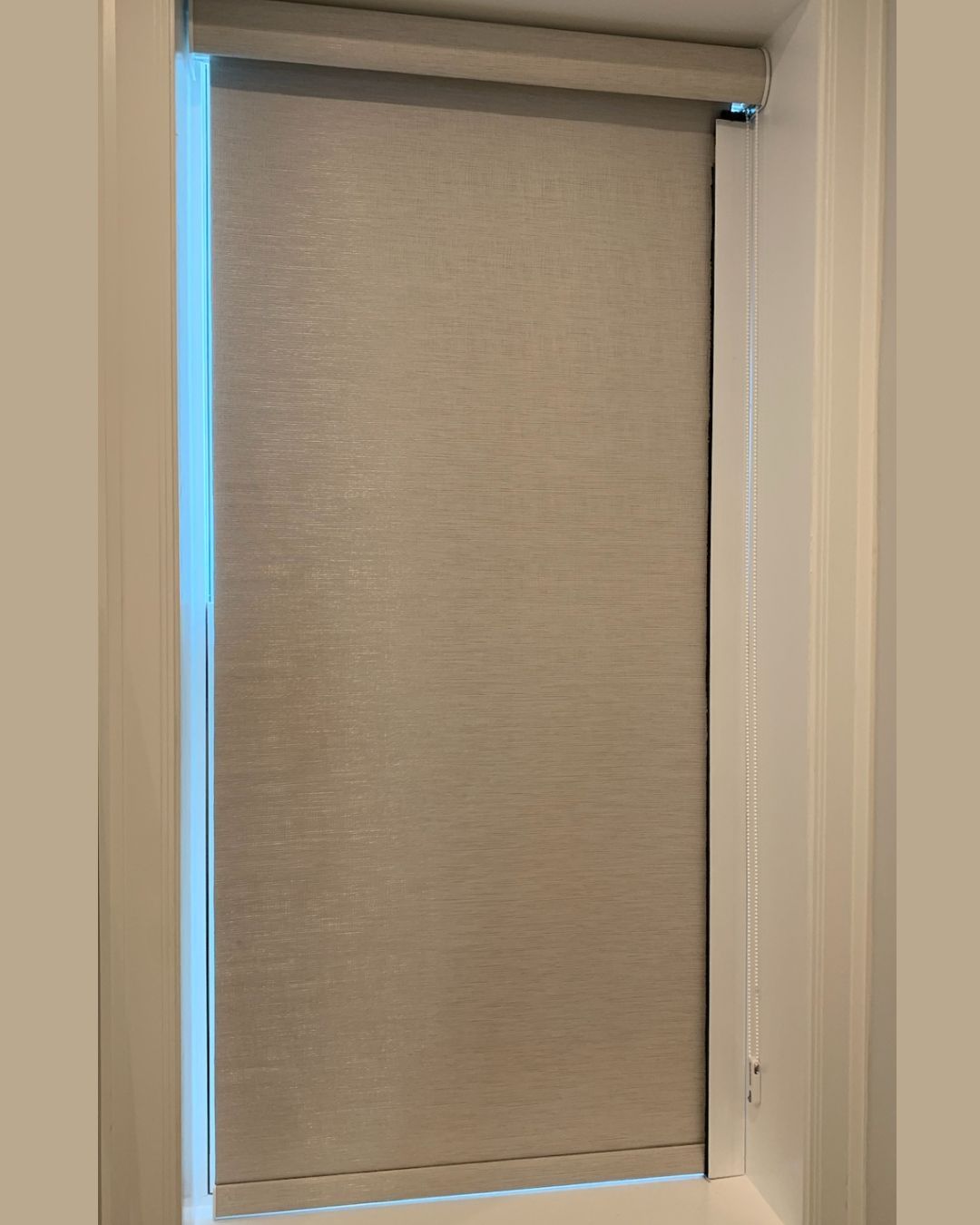
Heavy Blackout Drapery Panels
For true home theater performance, use floor-to-ceiling blackout drapery panels.
Benefits:
- Blocks 100% of outside light.
- Absorbs sound waves and minimizes echo.
- Enhances luxury and depth in the room.
Choose velvet or thick suede for the best results. These materials not only look rich but also perform exceptionally for light and sound control.
Layered Window Treatments for Light Control
Layering combines the functionality of shades with the aesthetic of drapes.
Common setups include:
- Blackout roller shades for total light blocking.
- Sheer curtains for daytime elegance.
- Heavy outer drapes for sound and style.
This approach provides flexibility. During casual use, open the drapes and let the shades filter soft light. For movie nights, close both layers to achieve full darkness.
Motorized and Smart Drapery Systems
Automation enhances both performance and experience. Motorized systems maintain consistent folds and minimize fabric wear.
They also allow for precise control over timing. You can sync drape movements with lighting and audio systems.
Advantages:
- One-touch control.
- Smooth, quiet operation.
- Integration with home automation systems.
For example, a scheduled routine can lower the drapes and dim the lights before your movie begins.
Acoustic-Focused Drapery
Sound behavior is critical in media rooms. Bare walls reflect sound, leading to echoes.
Acoustic drapery, made from dense fabrics or layered materials, helps absorb excess noise.
Recommended fabrics include:
- Heavy velvet or wool blends
- Textured weaves with acoustic lining
- Multi-layered panels with soundproof backing
These fabrics not only improve audio clarity but also make dialogue sharper and music richer.
Style-Driven Drapery Choices for Multipurpose Spaces
For media rooms that double as living spaces, choose versatile styles.
Consider:
- Neutral tones to match furniture and décor.
- Ripplefold or pinch-pleat designs for elegance.
- Blended fabrics that balance beauty with function.
This approach gives you flexibility without sacrificing comfort or appearance.
Installation, Maintenance, and Budget Considerations
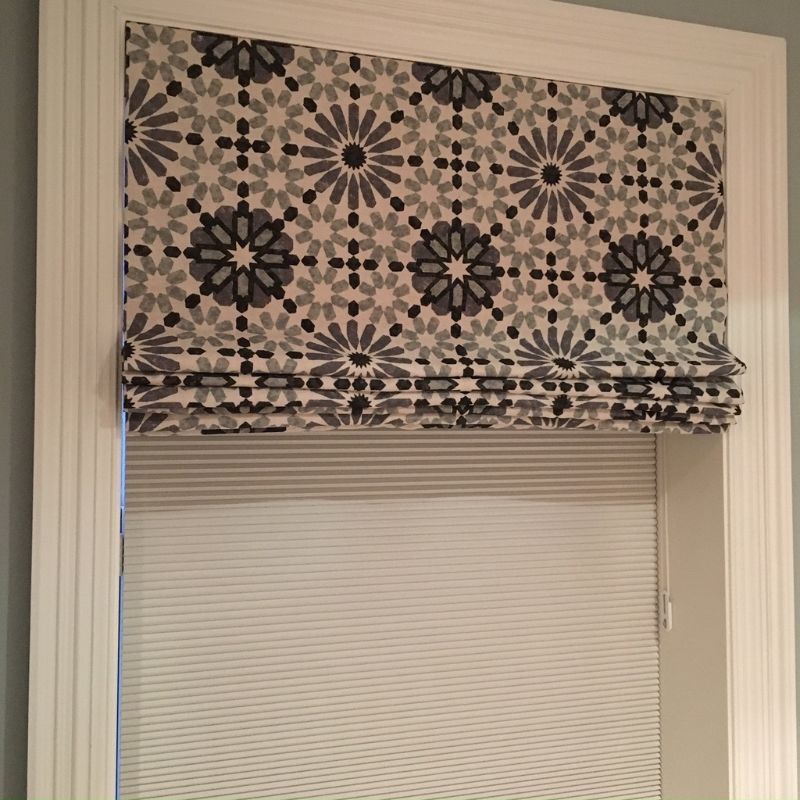
Measuring and Mounting Tips
Accurate measurement ensures performance.
Follow these steps:
- Measure the full width of the window and add extra for stack space.
- Install the track close to the ceiling for maximum height effect.
- Extend drapery past window edges to prevent light leaks.
Choose mounting hardware that supports the weight of your chosen fabric. A ceiling-mounted track works best for blackout setups.
Maintenance and Longevity
High-performance drapery requires care.
Maintenance tips:
- Vacuum or steam clean regularly to remove dust.
- Avoid machine washing heavy fabrics.
- Service motorized systems periodically.
Proper maintenance preserves color, texture, and functionality.
Budget vs Performance
Custom drapery offers superior fit and finish compared to ready-made options. While it may cost more upfront, it ensures precise installation and higher performance in light and sound control.
Factors that affect cost include:
- Fabric type and weight
- Motorization or smart features
- Track system quality
Simply Windows provides expert guidance to help balance cost with performance.
Mistakes to Avoid in Drapery for Home Theaters and Media Rooms
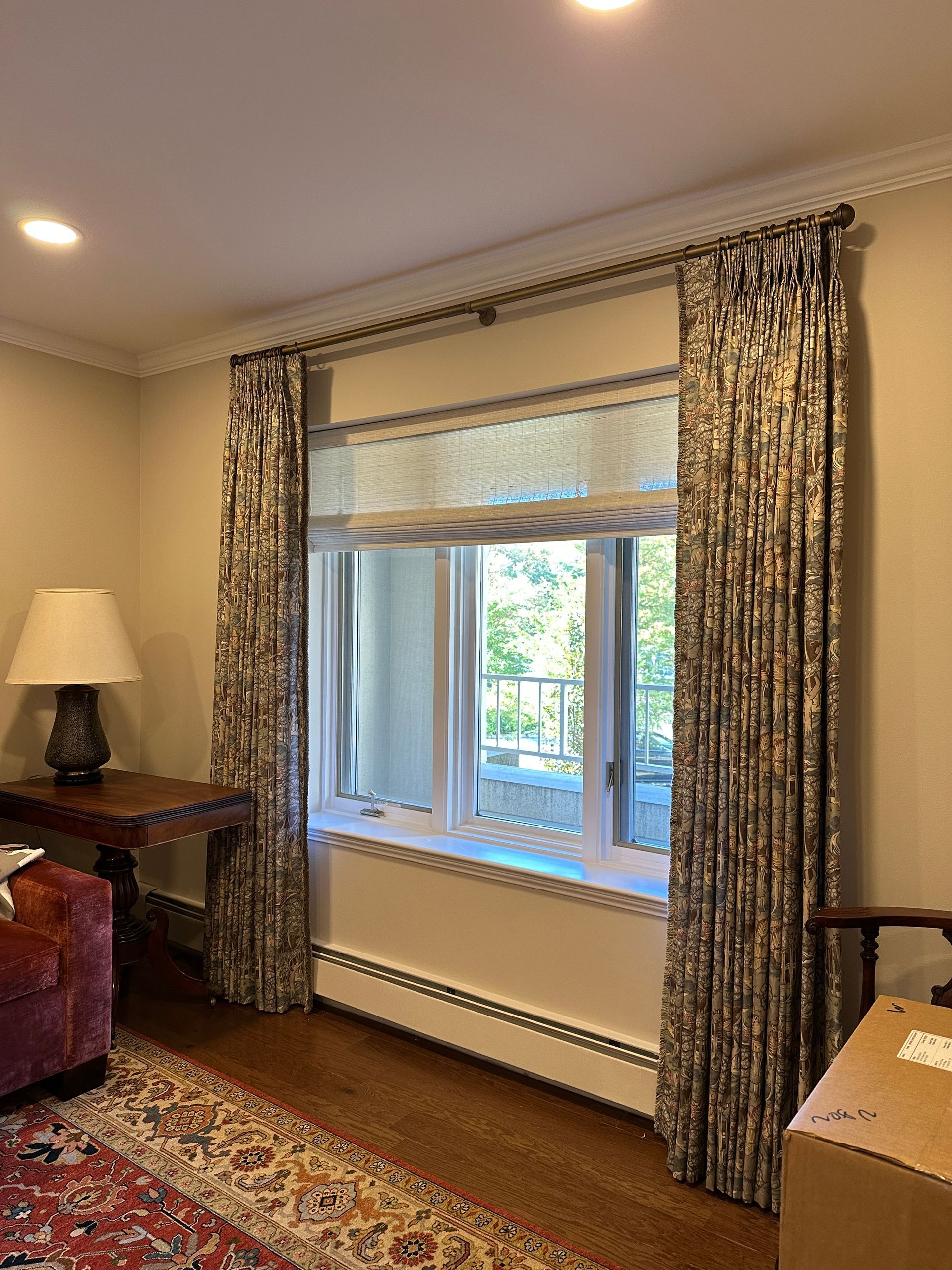
Avoiding common mistakes saves time and ensures better results.
Common issues:
- Light leaks: Caused by short panels or improper track placement.
- Reflective fabrics: Glossy materials reflect light back onto the screen.
- Ignoring acoustics: Sound bounces off untreated walls, creating echo.
- Poor hardware: Weak rods can sag under heavy fabric.
- Overly bright colors: Distracts from the viewing experience.
If your setup has any of these problems, it might be a clear
time to change your drapes and upgrade to materials designed for true home theater performance. By focusing on precision and planning, you create a seamless and immersive space.
By focusing on precision and planning, you create a seamless and immersive space.
Choosing the Right Drapery for Your Space
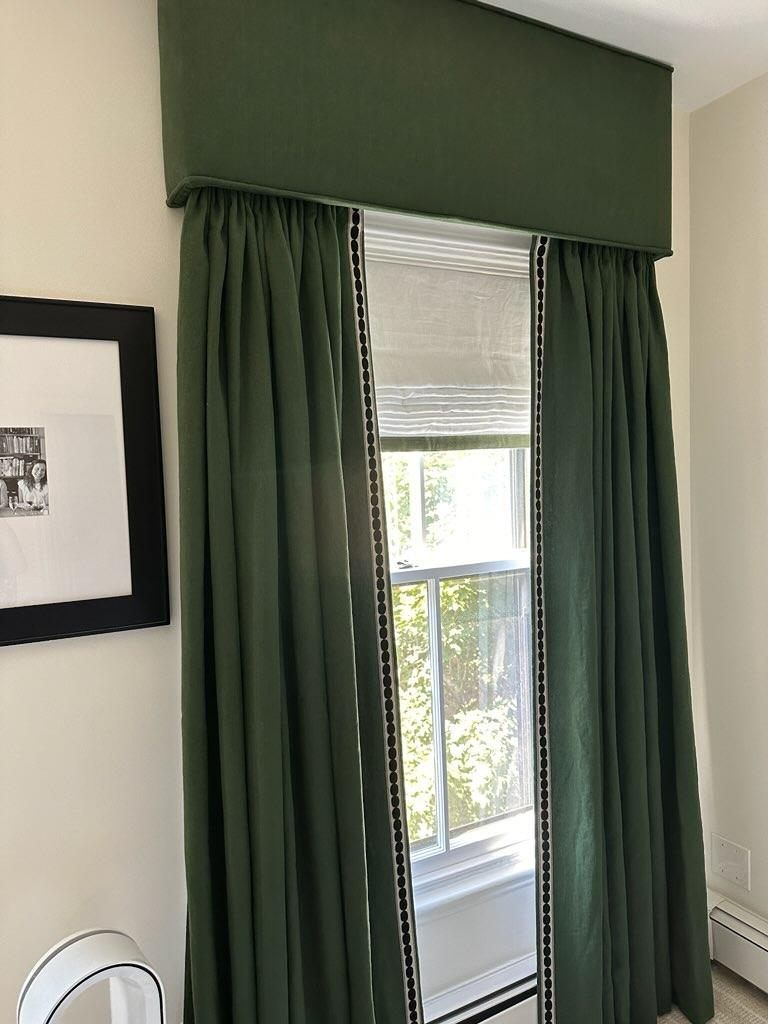
Every home theater or media room has unique needs.
If you prioritize full darkness and acoustic performance, go with heavy blackout velvet drapery.
If you want flexibility,
layered drapery with motorized roller shades offers the best balance.
For family or multipurpose rooms, lighter-toned acoustic fabrics maintain style and comfort.
Your choice depends on how you use the space and the atmosphere you want to create.
Simply Windows helps you match fabric, hardware, and automation for the ideal setup.
Frequently Asked Questions

